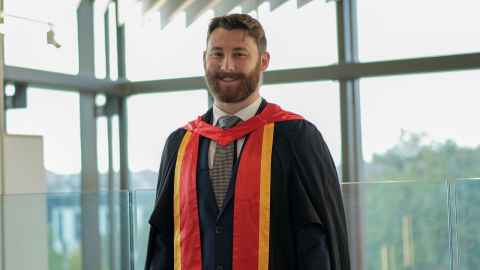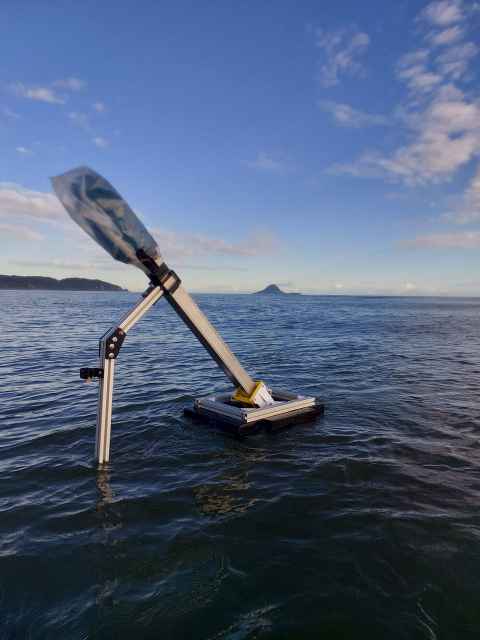Wave-powered tech turns the tide on seafood farming
14 May 2025
What if ocean waves could power our seafood farms? One engineering graduate is working on the answer.

When mechanical engineer Jonathan Everett heard about a PhD project using wave energy to power seafood farms, he knew he had to be part of it.
“It was advertised in a lecture by Dr Vladislav Sorokin, my PhD supervisor in the Faculty of Engineering and Design, and I thought it sounded really interesting,” says Jonathan.
“Everything sort of fell into place from that moment.”
Jonathan’s research tackled a growing problem in the aquaculture industry: remote seafood farms, like those for mussels and salmon, often lack access to clean, reliable energy. Salmon farms typically rely on diesel generators, which are costly and carbon-intensive. Mussel farms, on the other hand, often don’t use electricity at all – but with a steady power supply, they could adopt tools like cameras, lights and sensors to boost efficiency and productivity.
His solution? A wave energy converter (WEC) that harnesses the vertical and horizontal motion of ocean waves to generate electricity, even in calm conditions.
“The device consists of a buoy that’s magnetically connected to a generator. The waves lift the buoy up and down, which then drives the generator and produces electricity,” says Jonathan.
After extensive design work, numerical modelling and physical testing in the lab, Jonathan deployed a prototype at a mussel farm in Aotea Harbour, off the coast of Waikato, during his PhD. The results were promising: the device was able to produce and store electricity using only wave energy, with no need for diesel or solar panels.

That early success helped lay the foundation for AMES NZ, a start-up company Jonathan co-founded with Dr Sorokin. Based at the University of Auckland’s Newmarket Innovation Precinct and supported by UniServices and Venture Lab, the company is now refining the device and exploring commercial applications with aquafarmers around the country.
“Aquafarmers are generally interested in what we’re doing. A lot of them are curious to see if it’ll actually work.”
Their focus now is on testing two different devices: a 50W version deployed at a salmon farm in the Marlborough Sounds, and a 5W version designed to power data buoys in areas where solar energy isn’t practical. Both are set for deployment this year and could be the first step toward real sales.
Looking back, the leap from doctoral student to start-up founder wasn’t entirely unexpected, says Jonathan, who graduated on 14 May.
“It was always part of the plan, but it became real when UniServices agreed to invest in the venture.”
There have been some surprises along the way – not least, how quickly marine organisms can cover the devices.
“Biofouling will grow on everything! I knew it would happen, but the speed at which it occurs has surprised me.”
Even so, Jonathan remains driven by the same idea that inspired his PhD in the first place: using clean energy to make aquaculture more efficient, productive and sustainable.
“We’re excited about what’s ahead,” he says. “There’s still a way to go, but we’re getting closer.”
Media contact
Hussein Moses | Media adviser
M: 027 361 1000
E: hussein.moses@auckland.ac.nz